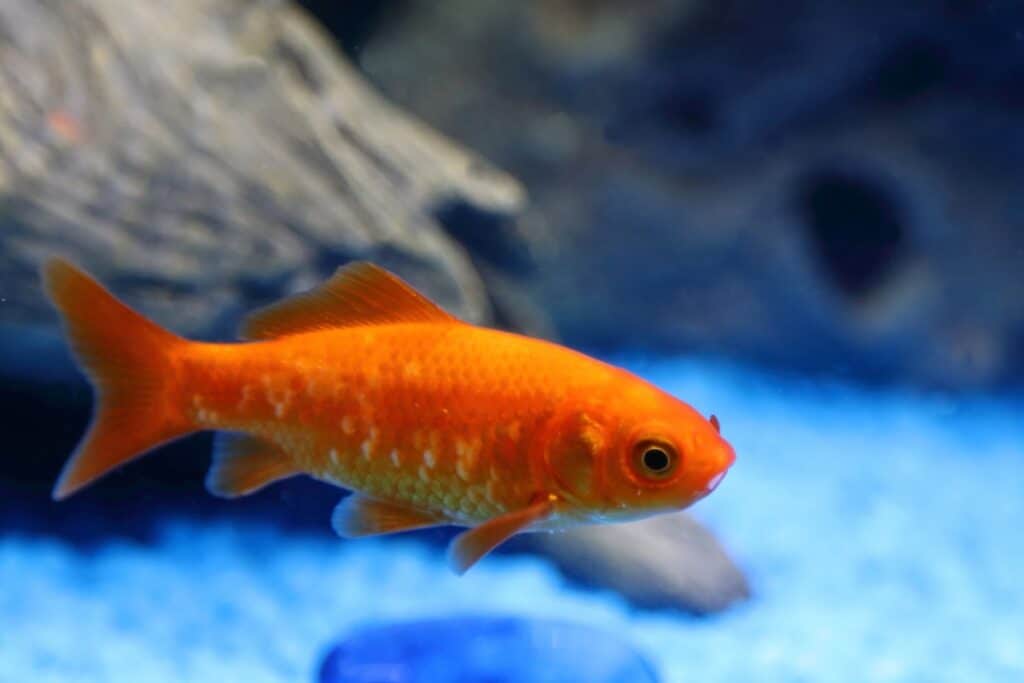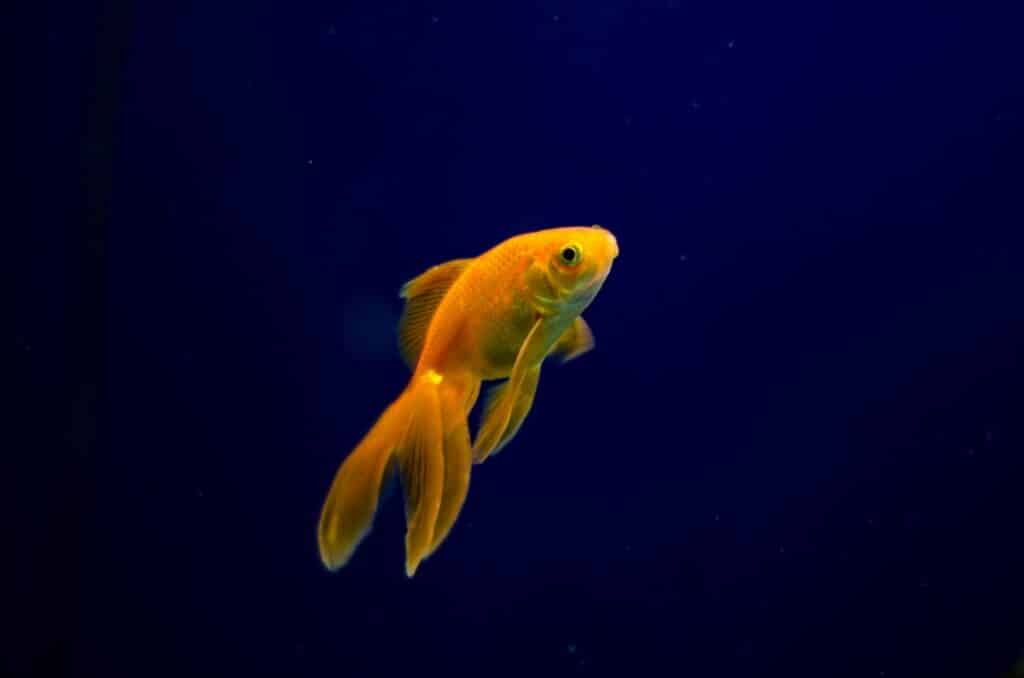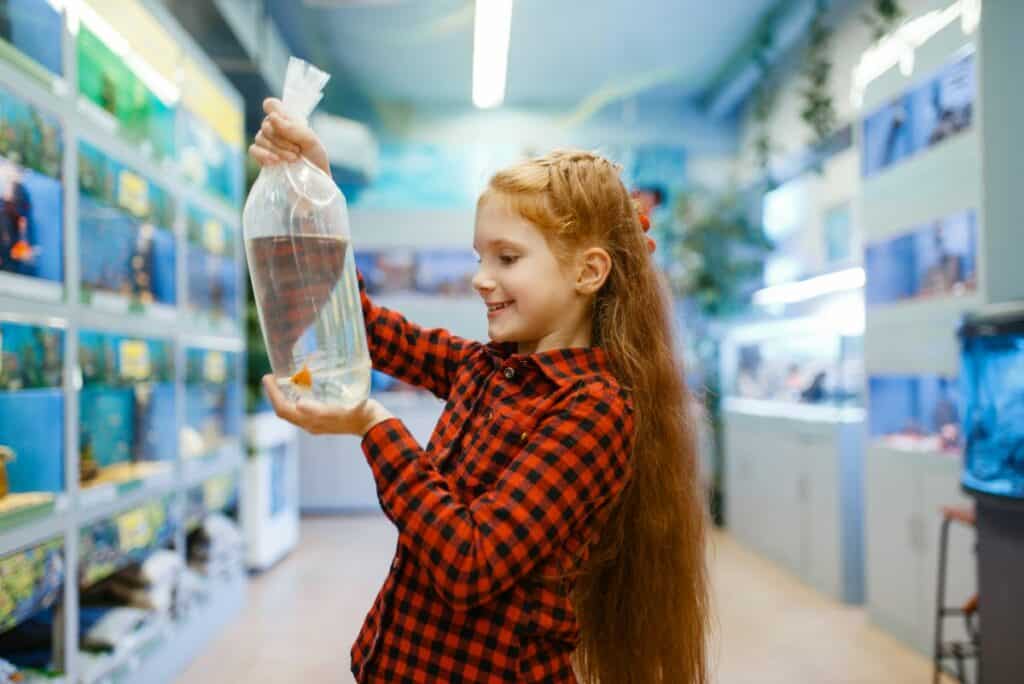the essentials in brief
A goldfish costs between €1,22 and €39,90 per piece, depending on the type, size and supplier. There are also cheaper or more expensive goldfish available online or from private breeders. Read more here...
A goldfish should be kept in a large, clean aquarium or pond with adequate space, plants, hiding places, and oxygen. In addition, it should be fed regularly with special goldfish food and have good water quality. Read more here...
Fish in the pond need a pump to filter, aerate and circulate the water. A pump prevents the water from tipping over, becoming dirty or overheating.
Would you like to get a goldfish, but don't know exactly how to properly care for and keep it? Then you are exactly right here. In this blog post you will learn everything you need to know to keep your goldfish happy and healthy. Whether in the pond or in the aquarium, goldfish are fascinating and colorful animals that will bring you a lot of joy. But before you decide on a goldfish, you should consider a few important points. We have put together the most important information about buying a goldfish for you.
What should be considered when buying the goldfish

Buying a goldfish is a beautiful and exciting experience, but also a responsibility. Therefore, you should think carefully about whether you are willing to take care of your goldfish and offer it a species-appropriate home. Before you decide on a goldfish, you should consider the following points:
- Find out about the different types of goldfish and their requirements. Goldfish are not just goldfish. There are many different breeds that differ in size, colour, shape and character. They also have different requirements when it comes to husbandry, feeding and care. Therefore, you should choose a goldfish species that suits you and your potential.
- Choose a suitable home for your goldfish. Goldfish need plenty of space and clean water to thrive. So you should set up a large and well-stocked aquarium or pond for your goldfish. In addition, you should test and replace the water regularly to maintain the water quality.
- Buy your goldfish from a reputable seller. There are many ways to buy goldfish, but not all are recommended. You should make sure that the supplier offers you healthy and high-quality fish and gives you good advice. You should also make sure that the transport for the fish is as stress-free as possible.
- Gradually acclimate your goldfish to its new home. If you bring your goldfish home, you should not put it in the aquarium or pond immediately, but first get used to the new water conditions. To do this, let him swim in the closed bag and gradually add some water from the aquarium or pond. After about half an hour you can carefully slide it into the water.
What are the most common problems with goldfish?
Goldfish are hardy animals, but even they can get sick or have problems. The most common problems with goldfish are
- Poor water quality: This is the main cause of many diseases and ailments in goldfish. If the water is too dirty, too warm, too cold or too acidic, it can weaken the fish's immune system and make them more susceptible to infections. In addition, the water can contain toxins that can poison the fish.
- overfeeding: This is another common mistake in keeping goldfish. Feeding too much or too often can lead to digestive problems, constipation or bloating. In addition, excess feed can pollute the water and reduce oxygen levels.
- parasites: These are small creatures that feed on the fish and harm them. There are different types of parasites that can infect the skin, gills or internal organs of fish. The most common symptoms are white dots, clouds of scales, pinched fins, or difficulty breathing.
- Bacteria: These are microorganisms that can cause infections. They can enter the fish's body through wounds, stress or poor water quality. The most common symptoms are ulcers, bleeding, detachment of the mucous membrane or ascites.
- mushrooms: These are molds that can grow on the skin or gills of the fish. They can be caused by injury, stress or poor water quality. The most common symptoms are cotton-like coverings, skin changes or breathing difficulties.
Tip: If you notice any of these problems with your goldfish, you should act quickly and fix the cause. You should also put your goldfish in a quarantine tank and treat it with an appropriate medication.
What types of goldfish are there?

The goldfish is not a natural species, but a cultivated form of the gable, a species of carp. Through selective breeding, humans have bred many different species of goldfish, varying in shape, color, and size. The most well-known goldfish species are
- wild form: This is the archetype of the goldfish, which resembles the pediment. It has a slender body, silver or bronze color, and a simple caudal fin. It is very robust and is well suited for ponds.
- veiltail: This is the classic form of goldfish commonly seen in aquariums. It has a squat body, is red or orange in color, and has a double caudal fin that looks like a veil. He is quite delicate and needs a lot of space and oxygen.
- Shubunkin: This is a colorful form of goldfish that resembles the koi. It has a slender body, a blue base color with red, white, and black markings, and a single caudal fin. It is very lively and is well suited to ponds.
- at the rate: This is an exotic form of goldfish, characterized by a cap on the head. It has a stocky body, is red or orange in color with white markings, and has a double caudal fin. He is very susceptible to diseases and needs a lot of care.
Tip: If you want to keep different goldfish species together, make sure they have similar needs and don't interfere with each other. For example, avoid socializing veiltails with wild forms or shubunkin, as they can bite each other's fins.
How do I keep my goldfish?
goldfish are undemanding and robust animals, which can be kept both in the pond and in the aquarium. However, there are some basic rules you should keep in mind to provide your goldfish with the best possible life.
Choose a suitable home for your goldfish. For one You should plan at least 1000 liters of water per goldfish in your pond. For a Aquarium you should have at least 50 liters of water per goldfish plan on. You should also make sure that your goldfish's home has enough depth, plants, hiding places and oxygen.
Feed your goldfish properly. Goldfish are omnivores that eat both plant and animal food. Feed them special goldfish food that tailored to their needs is. Don't feed too much and don't feed too often. A small amount once a day is enough. Occasionally you can also feed live or frozen food such as mosquito larvae or Tubifex.
Groom your goldfish regularly. Goldfish produce a lot of waste that pollutes the water. Therefore, you should regularly change part of the water and vacuum the floor. You should also check the water parameters and adjust them if necessary. The following values are recommended for goldfish:
Temperature: 10 - 25 °C
pH value: 6,5 - 8
Total hardness: 5 – 20 °dH
Nitrite: < 0,3 mg/l
Nitrate: < 50 mg/l
Watch your goldfish closely. If you know your goldfish well, you will quickly notice when something is wrong. Look for signs such as loss of appetite, apathy, injuries, dandruff, pinched fins, or white spots. If you notice such symptoms, you should act quickly and find out the cause. Often it is a disease or poisoning that needs to be treated.
Buying goldfish made easy: Follow these steps to success
Goldfish are great animals that will bring you a lot of joy. If you decide to get a goldfish, you should be well informed and prepared in order to offer it a good life. We hope that this blog post has helped you to learn everything you need to know about buying goldfish. If you have any questions or suggestions, please feel free to leave us a comment. We wish you a lot of fun with your goldfish!



